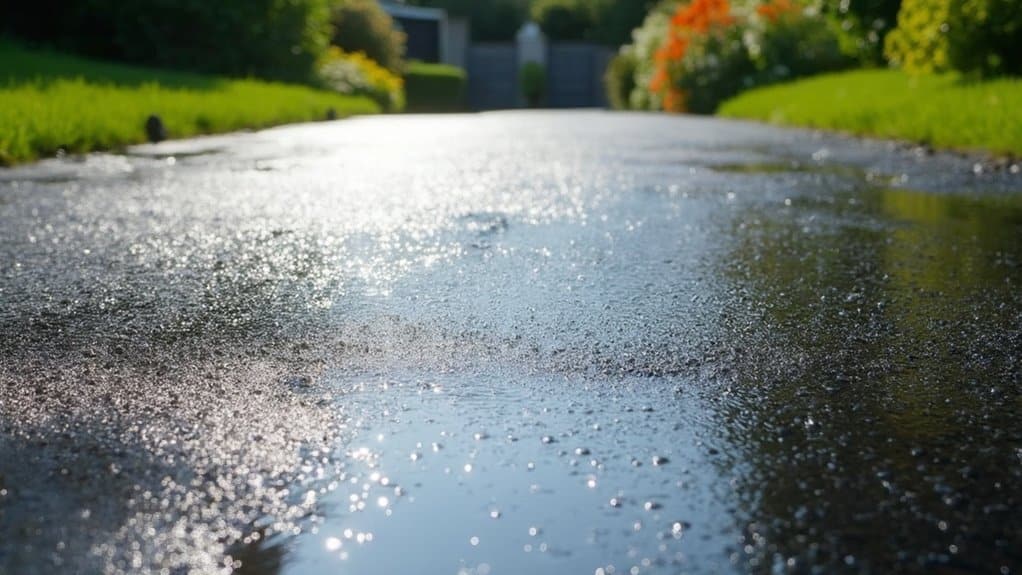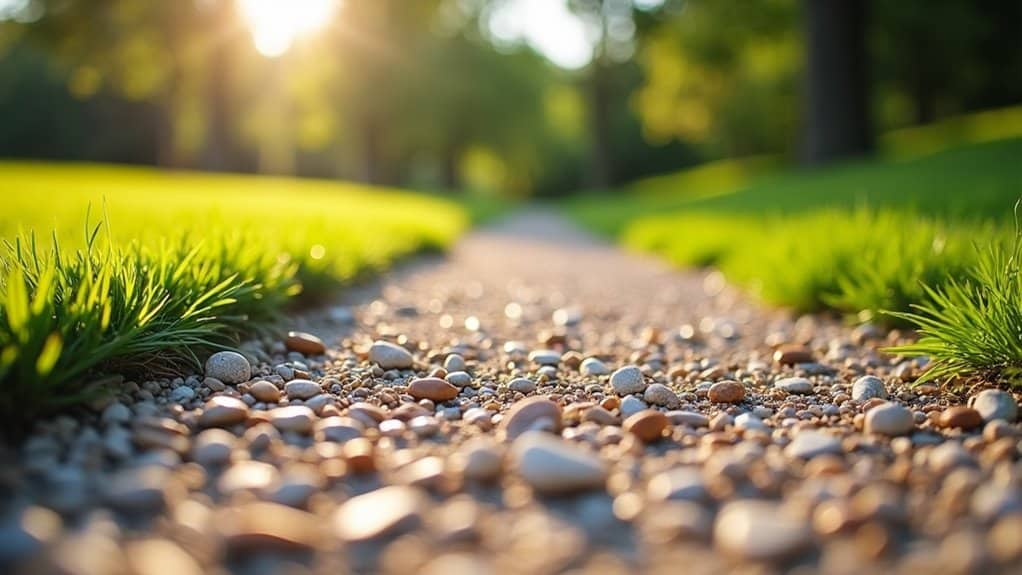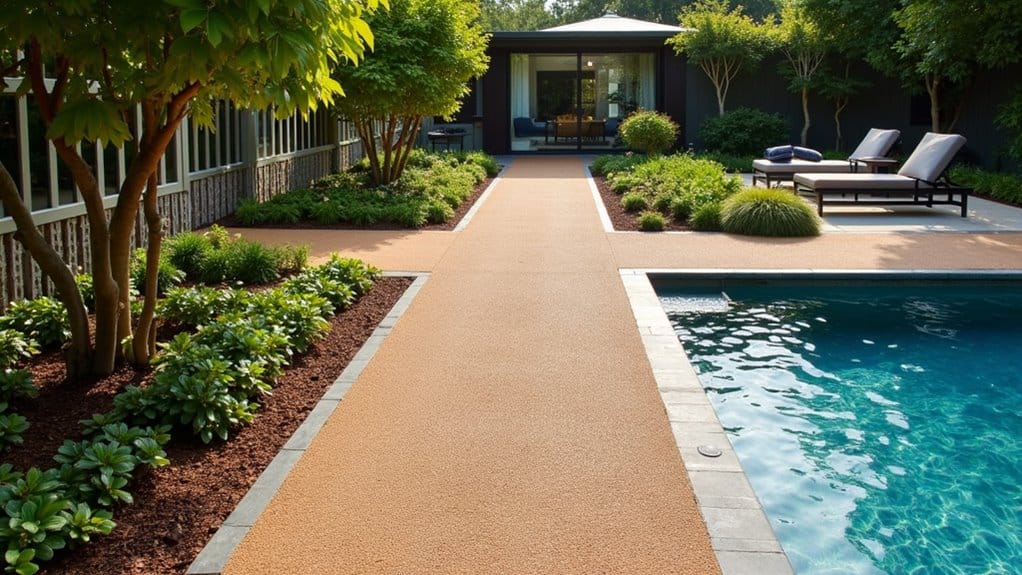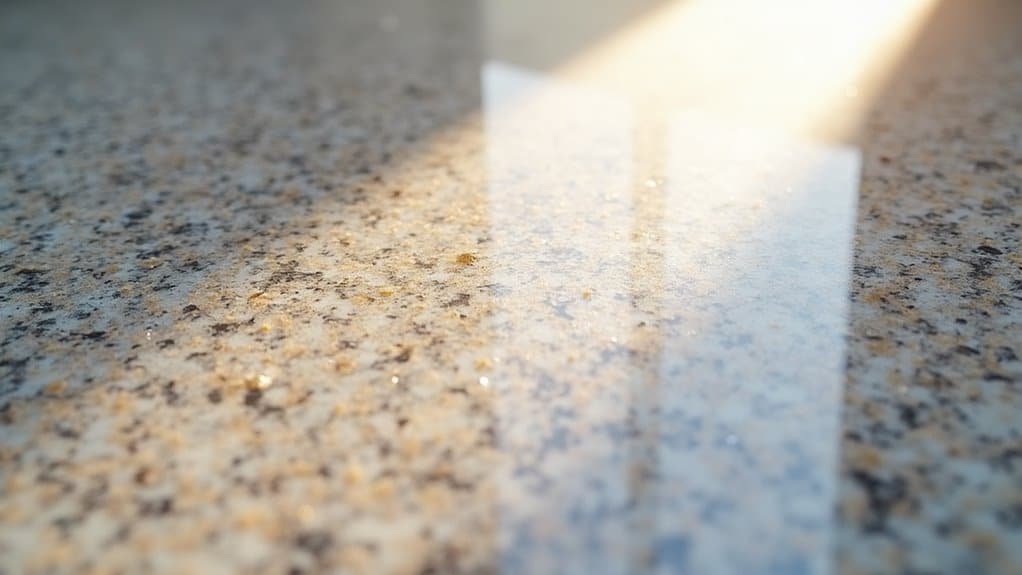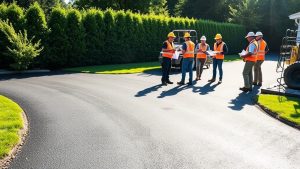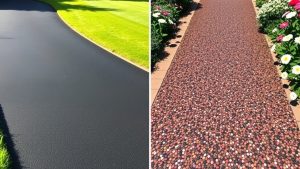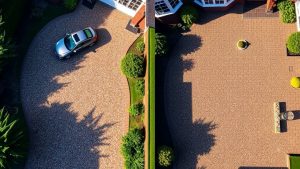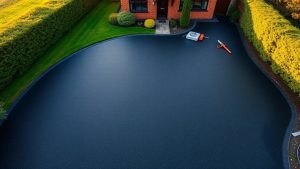Yes, you can pressure wash a tarmac driveway, but caution is necessary. Always use a low-pressure setting to avoid causing damage. This method can improve the appearance and remove hazards, but using high pressure risks dislodging aggregates and increasing maintenance costs. If done improperly, it could compromise the surface texture and safety. Consider eco-friendly cleaning methods as safer alternatives. There are several factors to consider, so let's delve into the best practices for maintaining your tarmac driveway.
Table of Contents
ToggleKey Takeaways
- Pressure washing can improve the look of tarmac driveways by removing dirt, debris, and growth like moss and algae effectively.
- However, using high-pressure settings can chip the surface and dislodge aggregates, which may cause damage.
- Regular pressure washing can help extend the lifespan of tarmac, but using the wrong techniques might lead to higher maintenance costs due to more frequent resealing.
- There are also environmental concerns, such as chemical runoff and excessive water usage during pressure washing.
- Alternative cleaning methods, like gentle scrubbing with eco-friendly products, can be safer and just as effective for maintaining tarmac.
Understanding Tarmac Composition
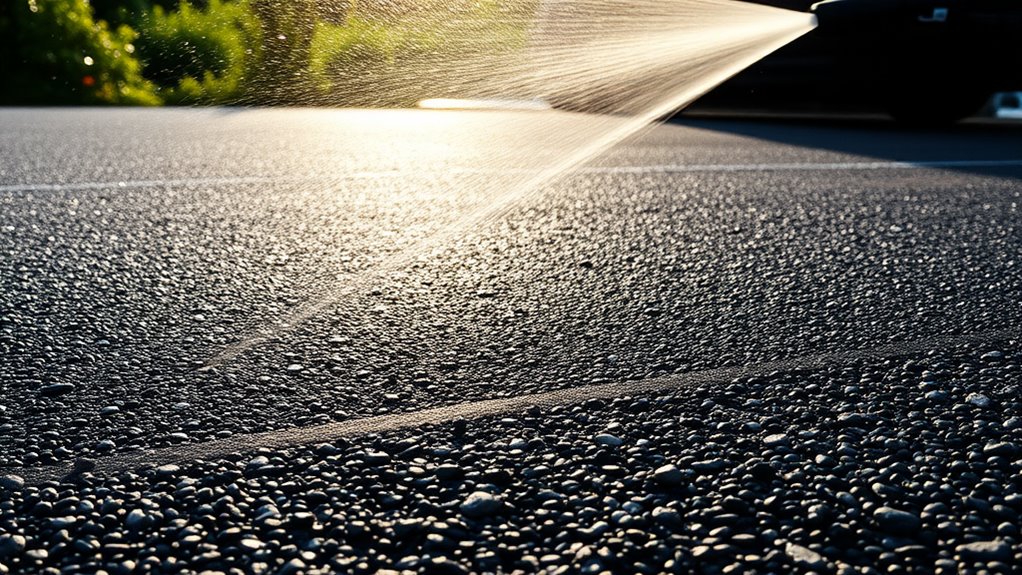
Understanding Tarmac Composition
Before pressure washing a tarmac driveway, it's important to know what it's made of. Tarmac is made from crushed stone aggregates like granite and limestone, which come in various sizes from coarse to fine. The angular shape of these stones helps them lock together, making the tarmac durable. Additionally, tarmac is known for its strength and weather resistance, making it a popular choice for road surfacing. Proper installation quality is crucial for ensuring the longevity of tarmac driveways.
Bitumen, a product of petroleum, binds the aggregates and gives the tarmac weather resistance and strength. There are different grades of bitumen, with stiffer types designed for heavier traffic. Additionally, filler materials like limestone dust are used to improve the overall stability of the tarmac and reduce permeability. The choice of aggregates is crucial, ensuring the tarmac meets specific needs while remaining durable over time.
How to Safely Pressure Wash Tarmac
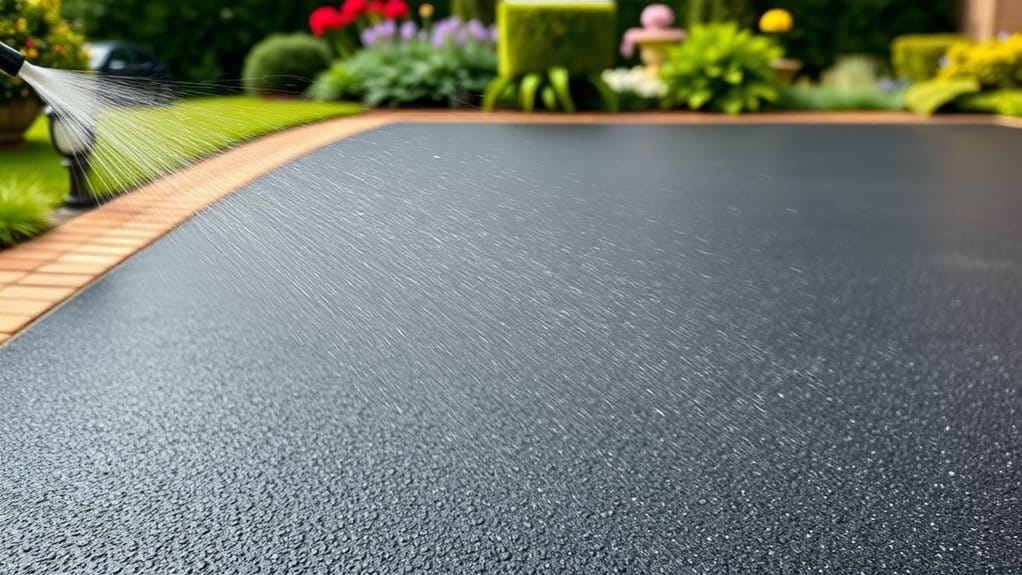
To safely pressure wash your tarmac driveway, follow these essential steps to avoid damage.
Start with a low-pressure setting to protect the surface. Keep the nozzle aimed away from the tarmac and use a wide fan tip for even pressure distribution. This ensures that you don't dislodge any crushed stone aggregates that are essential for the tarmac's durability.
If you spot any moss or weeds, treat them with a weed killer before washing. Make sure to cover nearby plants to protect them from cleaning solutions.
Maintain a safe distance while using a steady, sweeping motion for uniform coverage. Avoid high pressure on any cracked areas, as this could worsen the damage.
Finally, rinse thoroughly to remove all cleaning solutions, and consider applying a seal coat afterwards to safeguard your driveway.
Advantages of Pressure Washing Tarmac
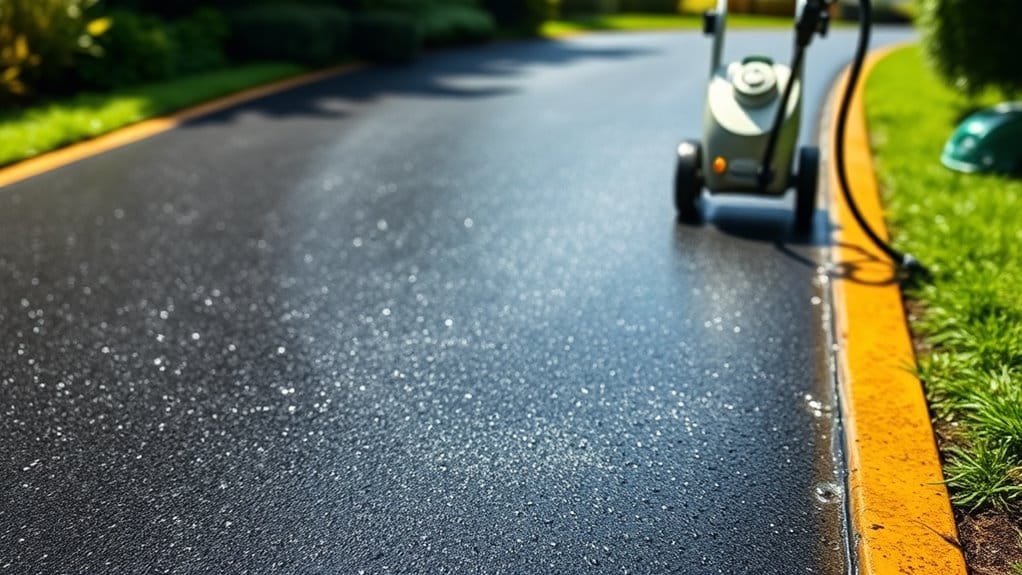
Once you've safely cleaned your tarmac driveway with a pressure washer, you'll quickly see the benefits. This method significantly boosts the visual appeal by removing dirt and debris, giving your driveway a fresh look that enhances your property's curb appeal. It also removes slip hazards like mould and algae, making it safer for everyone. Regular pressure washing helps maintain your tarmac, prolonging its lifespan and potentially saving you money on repairs. Additionally, this efficient technique saves time, delivering instant results without the need for tedious scrubbing. In short, pressure washing is a sensible choice that improves appearance, safety, and durability, while also preventing damage from environmental factors that could lead to costly repairs. Furthermore, using a pressure washer can help identify early signs of growth like weeds and moss that may need treatment.
Disadvantages of Pressure Washing Tarmac
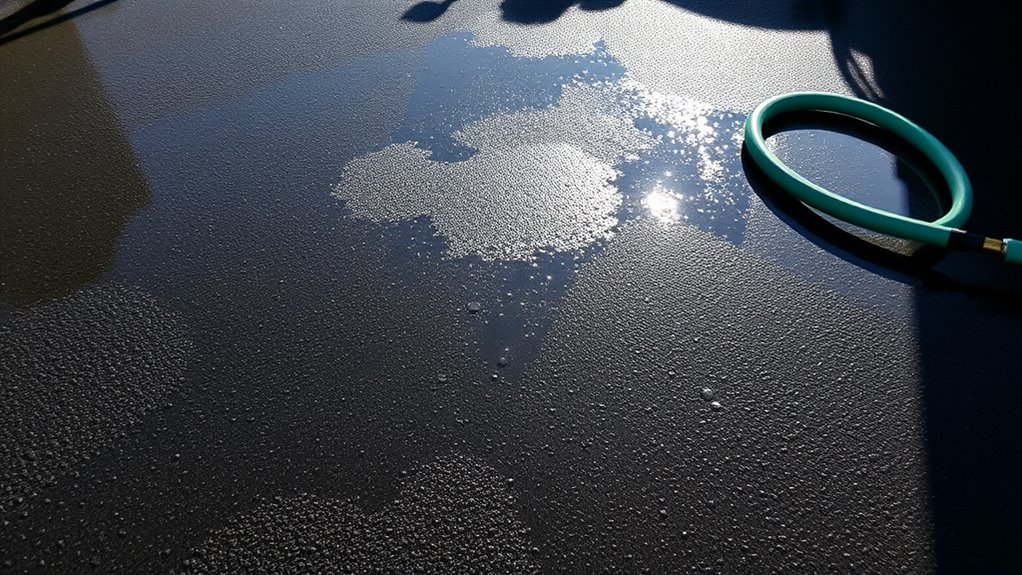
While pressure washing can freshen up your tarmac driveway, it has notable downsides to consider. High-pressure settings can chip the surface, dislodging aggregate stones and leading to erosion. This not only reduces the driveway's durability but also affects its texture and traction, making it less safe to drive on.
Regular pressure washing may increase maintenance costs, as you'll need to reseal the surface more frequently. Moreover, improper techniques can cause significant damage, especially if you're not experienced.
There are also environmental concerns related to chemical runoff and excessive water usage. Overall, while pressure washing has its advantages, it's important to be aware of these drawbacks when maintaining tarmac.
Alternative Cleaning Methods for Tarmac Driveways
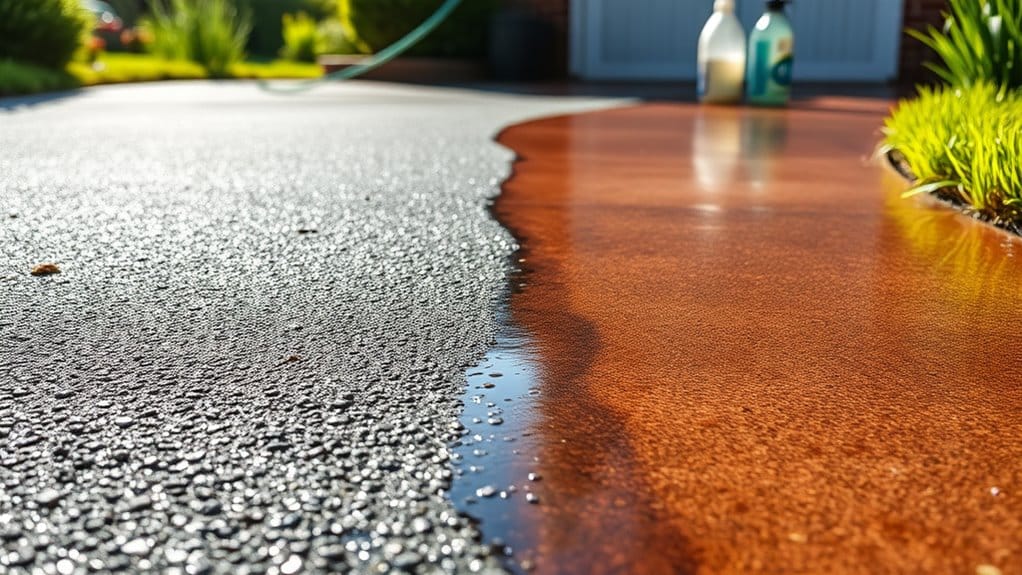
Pressure washing mightn't be the best option for cleaning your tarmac driveway due to its potential drawbacks. Instead, opt for eco-friendly methods like using brooms and leaf blowers to remove debris, which can significantly improve the cleaning process.
For persistent stains and moss, tarmac-specific cleaning products work effectively without the harshness of pressure washing.
Regular maintenance is key—hose down your driveway occasionally to prevent dirt build-up, and use a soft-bristled brush for gentle scrubbing.
A simple mix of detergent and water is ideal for general cleaning, while vinegar and water can help tackle grime. Additionally, regular inspections can help catch early signs of damage and maintain the integrity of your tarmac driveway.
Always check that your chosen products are safe and compatible with tarmac to ensure your cleaning routine is both effective and environmentally friendly.
Frequently Asked Questions
How Often Should I Pressure Wash My Tarmac Driveway?
You should pressure wash your tarmac driveway every six months. Regular maintenance is essential, so keep an eye out for stains and debris like leaves or dirt. This helps maintain its appearance and prevents issues such as mould or algae growth.
Can Pressure Washing Remove Oil Stains From Tarmac?
Pressure washing can effectively remove oil stains from tarmac, especially when used with specialised cleaning products. For the best results, tackle the stains promptly and adjust your pressure settings to safeguard the tarmac during the cleaning process.
Is It Safe to Pressure Wash in Cold Weather?
In cold weather, it's important to take care when pressure washing. Use the right techniques, such as adjusting the pressure settings and choosing appropriate nozzles, to avoid damage and ensure effective cleaning. For instance, using a wider nozzle can help prevent the water from freezing on surfaces. Always prioritise safety to achieve the best results.
What Equipment Do I Need for Pressure Washing Tarmac?
Not all pressure washers are suitable for tarmac. You'll need one that delivers between 1500 and 3000 PSI. Pair this with effective cleaning solutions and a flat surface cleaner for the best results on your tarmac driveway.
Are There Any Tarmac Sealants Recommended After Pressure Washing?
After pressure washing, it's advisable to use tarmac sealants such as emulsions or coal tar-based products. These sealants provide protection against stains and UV damage, while also improving the look and longevity of your driveway. For instance, an emulsion sealant can create a smooth finish, making it easier to maintain and more visually appealing.
Conclusion
In summary, while pressure washing your tarmac driveway can improve its appearance, it's important to consider the pros and cons. Many homeowners find that a gentler cleaning method often leads to better long-term results. Understanding the materials in tarmac and exploring alternative cleaning options can help you maintain your driveway's integrity and look without the risk of damage. Taking the time to select the right cleaning technique is crucial for protecting your investment.
Prepare the perfect base for your resin bound stone installation and discover the crucial factors that ensure lasting durability.
Know where resin bound surfacing can transform spaces for both residential and commercial use, and discover the countless benefits that Read more
A stone carpet combines beauty and resilience in flooring, but what makes quartz floors uniquely beneficial? Discover the secrets behind Read more

